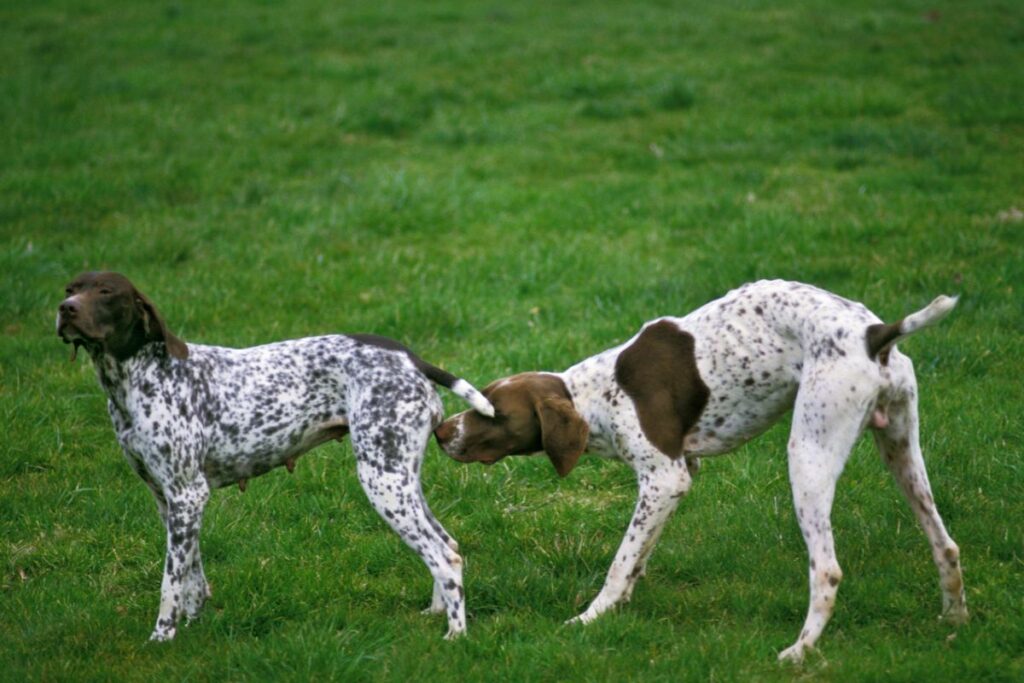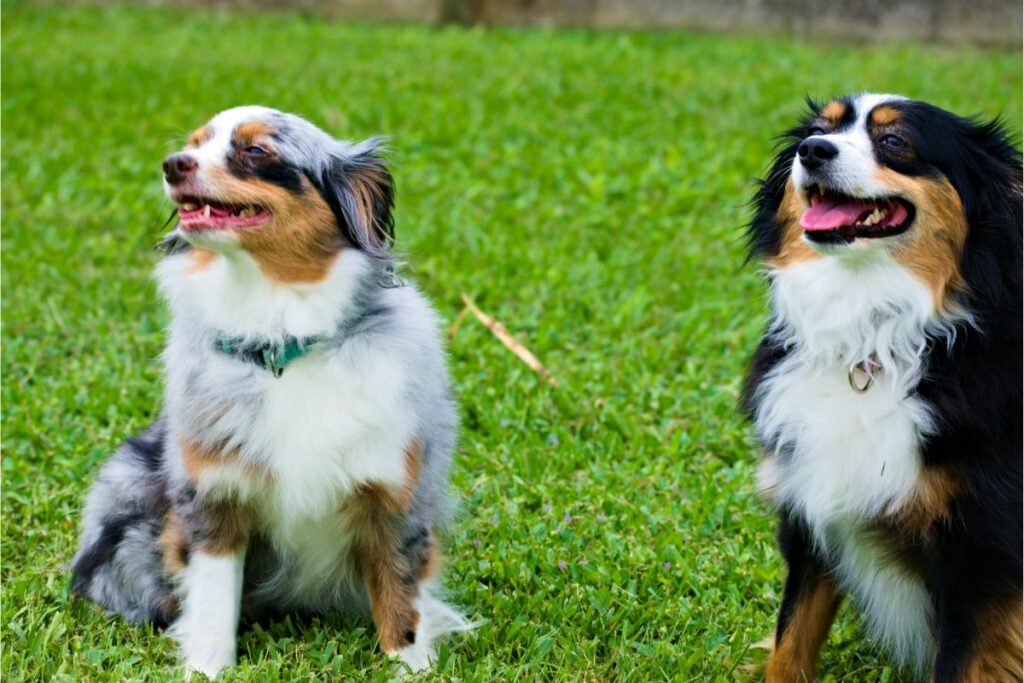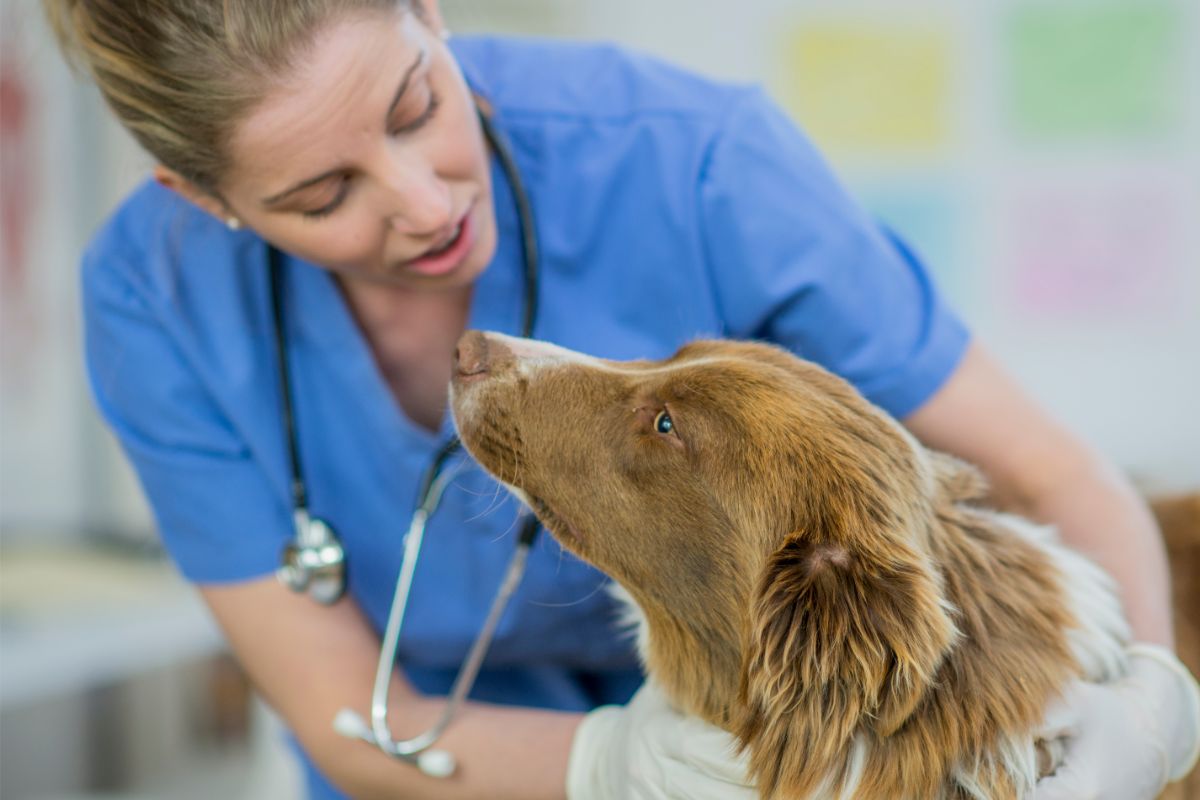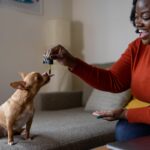We’ve all seen those classic cartoons where a male dog’s heart jumps out of his chest when he spots a lovely lady.
Well, the canine world isn’t that different! If you’re dealing with a lovestruck male dog who just won’t leave your female dog alone, don’t fret.

We’re here to help you navigate this often amusing but sometimes exasperating situation.
Understanding The Attraction
First things first, it’s essential to recognize that your male dog’s infatuation with your female dog is perfectly normal behavior.
Dogs, like humans, can form strong emotional bonds and attractions.
In the doggy dating world, they don’t rely on swiping left or right; it’s all about pheromones, body language, and shared playtime.
So, when your male dog seems smitten with your female dog, it’s likely because he’s picked up on her unique scent, or they’ve established a great rapport during their playdates.
Keep An Eye On Timing
If you’ve noticed your male dog’s affectionate behavior has recently escalated, it’s worth considering the timing.
Female dogs go through their estrus or “heat” cycle approximately every six months, and this can make them even more alluring to their male counterparts.
During this time, female dogs release specific pheromones that signal their readiness or mating, which can be quite the doggy aphrodisiac.
If you’re not planning on breeding your dogs, it’s crucial to be aware of this cycle. It’s a temporary phase, but it might be one of the main reasons behind your male dog’s amorous advances.
You can help manage this situation by keeping your dogs separated during your female’s heat cycle. This will give both of them some much-needed space.
Behavioral Solutions
While it’s understandable that you may find the constant attention from your male dog a bit overwhelming, there are some practical and friendly ways to address this issue:
Redirect Their Energy
Sometimes, the solution is as simple as providing an alternative outlet for your male dog’s amorous energy.
Engaging in regular exercise and playtime can help reduce his focus on your female dog. Try interactive toys, vigorous walks, and fetch games to tire him out.
Training And Distractions
A well-trained dog is often a more obedient and less impulsive one. Work on basic commands like “sit,” “stay,” and “leave it” with your male dog.
This can help redirect his attention away from the object of his affection when needed.
Create Seperation
If your male dog’s advances are becoming too much for your female dog to handle, consider giving her a space of her own.
This safe haven can be a comfy crate or a separate room where she can escape when she’s had enough attention.
Spaying And Neutering
If you’re not planning to breed your dogs, spaying your female dog and neutering your male dog can significantly reduce their hormonal-driven behaviors.
Consult your vet to discuss the appropriate timing for these procedures.

Professional Help
In some cases, particularly if your male dog’s infatuation leads to aggressive or overly dominant behavior, it may be wise to seek the assistance of a professional dog trainer or behaviorist.
They can provide expert guidance on managing the situation.
Create Balanced Playdates
Allowing your male dog to spend quality time with your female dog is essential for maintaining a healthy doggy relationship. After all, dogs are social creatures, and companionship is a fundamental need.
However, it’s equally important to ensure that these interactions are balanced and don’t become too one-sided.
To achieve this:
- Supervise Play: Keep a close eye on their intentions, especially during the initial stages. This will help you ensure that both dogs are comfortable and happy with the interaction.
- Time Apart: While it’s great for your dogs to play together, they also need some individual time and space. Separate playdates can help them develop their unique personalities and social skills.
- Equal Attention: Make sure that your male dog doesn’t monopolize all the playtime. Spend quality one-on-one time with each dog to maintain a balanced relationship.
Addressing Aggressive Behavior
While most male dogs simply have a crush on their female counterparts, some may display more aggressive behavior.
If you notice your male dog becoming territorial or too dominant, it’s crucial to take action to avoid any dangerous situations:
Interrupt Aggression
If you see any signs of aggression, such as growling, snapping, or fighting, it’s vital to intervene immediately. Safely separate the dogs and consult a professional trainer for guidance.
Avoid Triggers
Be aware of what might be triggering the aggression. Is it specific toys, treats, or even your attention? Avoid these triggers or manage them carefully.
Consult A Professional
If the aggressive behavior continues, it’s best to consult a dog behaviorist or trainer who can assess the situation and provide tailored guidance.
Conclusion
Remember, your dogs rely on you to create a harmonious living environment. Dealing with a male dog’s infatuation with a female dog is a common challenge for many pet owners.
With the right understanding and techniques, you can help them build a respectful and balanced relationship.
Your male dog’s love may be unrelenting, but with the guidance offered here, you can help him deal with his unrequited feelings.
Frequently Asked Questions
Why is my male dog so interested in my female dog?
Male dogs often become interested in female dogs, especially during the female’s heat cycle, because of their natural hormonal and instinctual responses.
This attraction is perfectly normal and a part of their natural behavior.
Can I use calming products or supplements to help my male dog’s behavior?
There are calming products and supplements available, such as pheromone diffusers or natural remedies.
These can help reduce stress and anxiety in your male dog, but it’s essential to consult your veterinarian before using any such products to make sure that they’re suitable for your pooch.
- Understanding Your Pooch: Why Is My Dog Pulling Hair Out Of Her Tail? - October 11, 2023
- Training Guide: How To Train A Bernese Mountain Dog - October 9, 2023
- Help! My Male Dog Won’t Leave My Female Dog Alone - October 6, 2023










